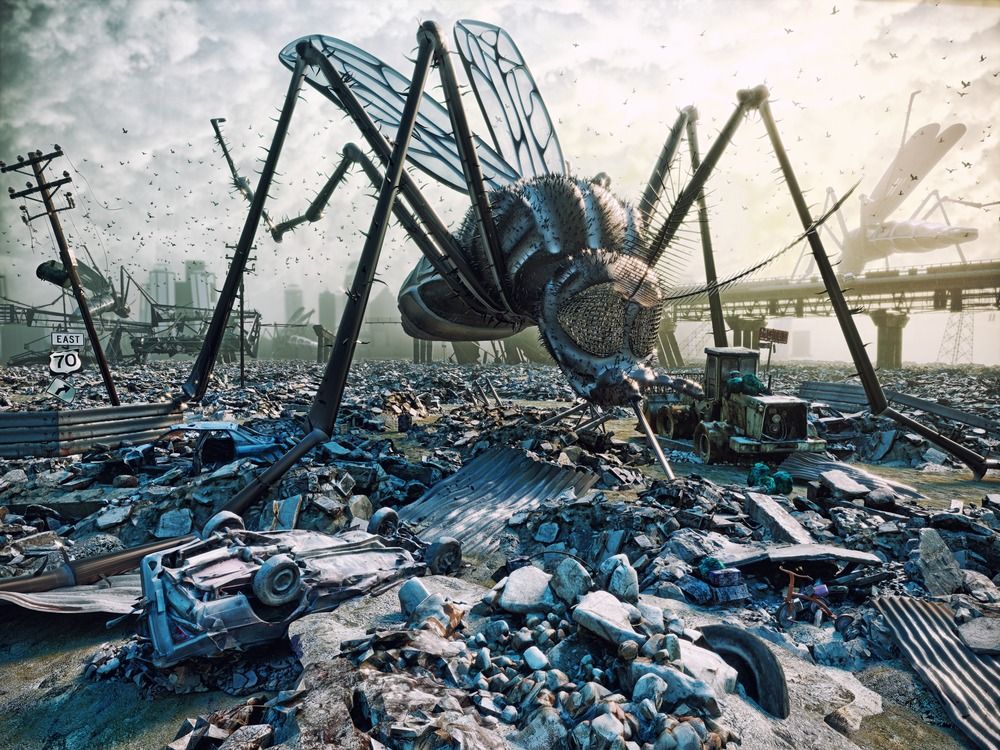Climate change could bring more “mosquito-pocalypses”
By Dawn Stover | October 3, 2018
 Shutterstock
Shutterstock
In the wake of Hurricane Florence and the rains that followed, residents of disaster-stricken areas of North Carolina are now also dealing with swarms of “enormous, aggressive” mosquitos up to a half-inch long. Some news reports are calling it a “mosquito-pocalypse.”
The giant mosquitos plaguing North Carolina are known as “gallnippers” (their scientific name is Psorophora ciliata). They can be three times the size of an average mosquito and are persistent biters that can easily penetrate two layers of clothing.
North Carolina’s governor has ordered $4 million to fund mosquito abatement; FEMA provides reimbursement for spraying. Gallnippers are more of a nuisance than a health risk, but they make storm recovery more difficult by driving people indoors.
“As surely as night follows day, mosquitos follow floodwaters,” noted a FEMA news release a decade ago, after Tropical Storm Fay inundated much of Florida. In a report published a few days ago, Michael Reiskind, an entomologist at North Carolina State University, told USA Today that there are 61 species of mosquitos in his state, of which “probably 15 to 20 would be highly responsive to floodwaters” that cause dormant eggs to hatch in vast numbers.
Climate change does not make mosquitoes bigger but it does make storms like Hurricane Florence, on average, wetter and wider—so we can expect to see more mosquito population explosions in the future in places like the Carolinas. Scientists from Stony Brook University, Lawrence Berkeley National Laboratory, and the National Center for Atmospheric Research estimated that “Florence’s rainfall forecast was more than 50 percent higher than it would have been without global warming, and that the hurricane’s projected size is about 80 kilometers larger,” InsideClimate News reported.
Climate change is expected to increase the threat of mosquito-borne diseases. But while gallnipper specimens have tested positive for West Nile and equine encephalitis viruses, they are not viewed as a disease vector of medical or veterinary importance and are not associated with diseases such as malaria and the Zika virus. In fact, gallnipper larvae are so huge that they can eat the larvae of smaller floodwater mosquito species.
Publication Name: Popular Science
To read what we're reading, click here
Together, we make the world safer.
The Bulletin elevates expert voices above the noise. But as an independent nonprofit organization, our operations depend on the support of readers like you. Help us continue to deliver quality journalism that holds leaders accountable. Your support of our work at any level is important. In return, we promise our coverage will be understandable, influential, vigilant, solution-oriented, and fair-minded. Together we can make a difference.
Topics: Climate Change, What We’re Reading
















Hurricanes reaching unexpected areas will spread those disease to places where they have never been before.
We are feeling that there have been more mosquitoes lately areas.